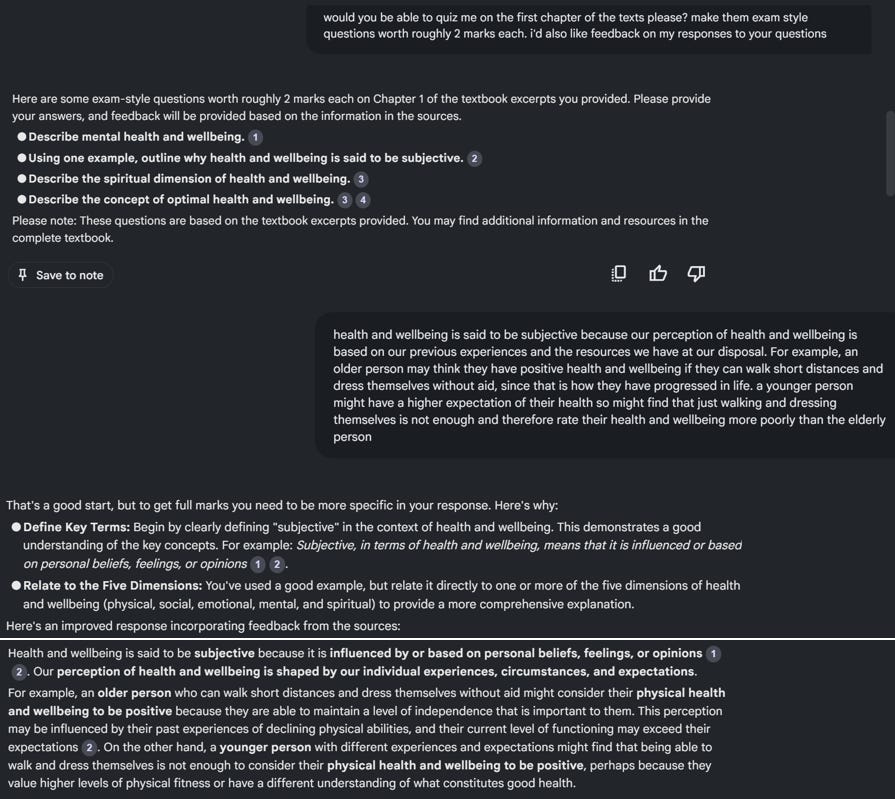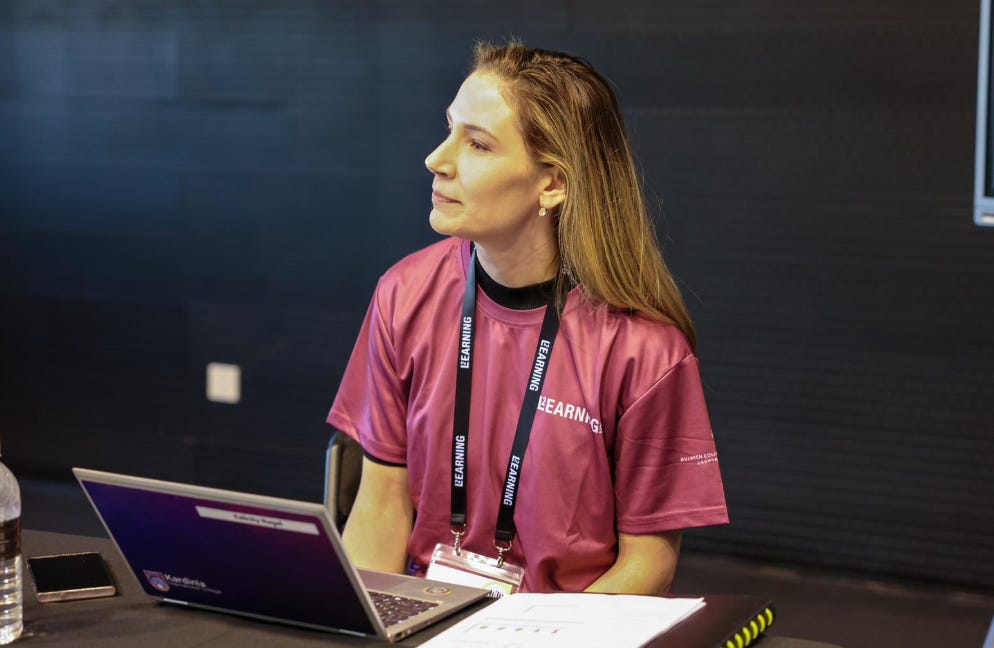Using Google’s Notebook LM to provide accurate and timely feedback
TL;DR – While Google’s simple and powerful Notebook LM has the ability to improve feedback turnaround times, at this stage it is only suitable for users over 18. Keep it on the radar.
Felicity has over 15 years of experience in education and currently works as an educational leader, senior secondary teacher, and technology coach. Committed to enhancing the learning experience, Felicity focuses on integrating technology into classrooms to make teaching more engaging and accessible for all students.
As a senior health teacher of over a decade, my focus has shifted towards improving the ‘tail-end’ of student scores rather than looking to the top end. By trying to ensure equitable access to knowledge, particularly through personalised learning, we help lift students out of the bottom percentile. A proven method we can encourage them to engage with is answering practice questions which are beneficial for multiple reasons: they aid with knowledge retrieval, improve higher-order thinking, and reduce exam anxiety. But these benefits only occur if a student receives accurate and timely feedback on their responses.
Typically, teachers source practice questions from purchased materials and past exams, and then they provide verbal or written feedback on student responses. However, chatbots are fast becoming another tool for students to use in their revision methods. In the pursuit of finding the fastest method of chatbot creation, I’ve been testing Google’s Notebook LM and its capacity to emulate exam-style questions and to provide feedback on written responses.
Not spending a great deal of effort on engineering prompts (no effort in fact), I managed to elicit an excellent set of practice questions. The feedback provided on one of my responses had much more detail than I could hope to provide to a student, and it was in line with the expectations and patterns of previous exams.
While this has me excited for my classes, an element of caution must be exercised. The accuracy of AI-generated content can vary, and reliance on AI without proper supervision might lead to misunderstandings or misconceptions of the course content. Additionally, managing screen time is crucial to prevent overreliance on a single method of study. The final exams for these students are hand-written, so using AI as a revision tool should only complement what students are doing already.
The accuracy of AI-generated content can vary, and reliance on AI without proper supervision might lead to misunderstandings or misconceptions of the course content.
But most crucial of all is the need to protect the data and privacy of young people. While Google states: “NotebookLM strictly does not train its AI models using any user data, except when provided as feedback, and only with their explicit consent. Even then, all personal information is anonymized to ensure privacy,” they also state that it is available to users that are 18+. This implies that responses of the LM can’t be locked down by the user to avoid explicit or inappropriate content. Because of this, I unfortunately cannot recommend the tool to my students.
Using other tools such as Flint.AI is an option to get around the security issues of Notebook LM but can be limited by the need to set multiple parameters, and some file uploads are too large for the engines to read and reference quickly. This does not mean alternatives are not worth exploring, but they weren’t first in my lineup of tools to explore.
With GenAI moving at a lightspeed pace, I predict it will get to a point where we have access to a product that blends the simplicity of Notebook LM with the security and privacy of Microsoft’s CoPilot Studio. Until that point, I will be using it to form unique practice questions that I can deliver to my students at the beginning of each lesson for retrieval practice. Additionally, I will be entering de-identified student responses into Notebook LM and using its feedback capabilities to rapidly improve the quality and speed of the feedback I provide. Ultimately it is still a tool that teachers will find incredibly useful, and its low/no skill entry point is an incredible selling point. Watch this space!




